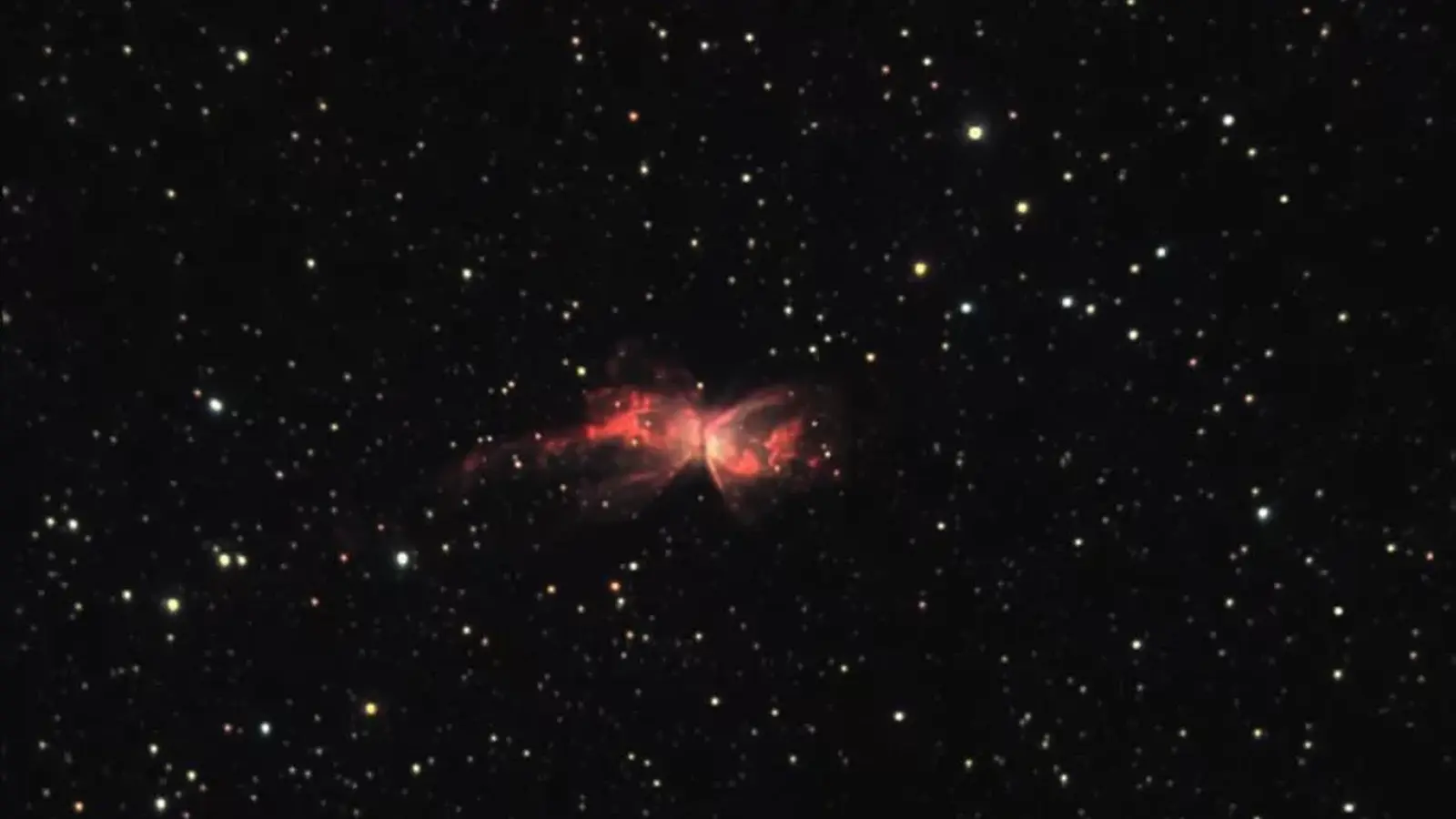3 Minutes
The Gemini South telescope has released a dramatic new view of the Butterfly Nebula (NGC 6302) to celebrate its 25th anniversary. The image highlights the complex, colorful shell of gas expelled by a dying star and underscores what awaits Sun-like stars at the end of their lives.
A vivid portrait of a dying star
NGC 6302, commonly called the Butterfly Nebula because of its wing-like lobes, is a planetary nebula in the constellation Scorpius. Although its exact distance is uncertain, astronomers estimate it lies roughly 2,500 to 3,800 light-years from Earth. At the nebula's core sits an extremely hot white dwarf—the exposed remnant of a star that once was somewhat more massive than our Sun.
What the colors mean
In the Gemini South image, red hues trace ionized hydrogen while blue tones indicate ionized oxygen. These colors are not only visually striking; they map different layers and temperatures in the expanding nebula. The central white dwarf is scorching—its surface temperature reaches about 250,000 degrees Celsius—lighting and ionizing the surrounding gas and sculpting the nebula's dramatic structure.
Why astronomers care — and what it means for our Sun
Planetary nebulae like the Butterfly Nebula offer a snapshot of stellar evolution for stars under roughly eight times the mass of the Sun. As a star exhausts its nuclear fuel, it swells into a red giant and sheds outer layers. The exposed core becomes a white dwarf, carrying roughly two-thirds the Sun's mass in the case of NGC 6302. These objects teach us how elements are recycled into the interstellar medium, contributing to future generations of stars and planets.

For a human-scale thought experiment: in about five billion years our Sun is also expected to pass through a planetary-nebula phase and end up as a white dwarf—albeit one less dramatic than NGC 6302’s fiery heart.
About the image and the Gemini observatories
The image was selected as part of Gemini South's "First Light" 25th anniversary contest, a project that engaged Chilean students in capturing a meaningful astronomical target. Gemini South sits on Cerro Pachón in the Chilean Andes and operates as one half of the international Gemini Observatory; Gemini North operates on Mauna Kea in Hawaii. Both telescopes are managed by NOIRLab under the U.S. National Science Foundation with international partners from Brazil, Canada, Chile and the United Kingdom.
Beyond its value as a stunning publicity image, this observation demonstrates the continuing scientific and educational role of ground-based optical telescopes in studying stellar death, nebular chemistry, and the dynamic processes that shape cosmic landscapes.


Leave a Comment